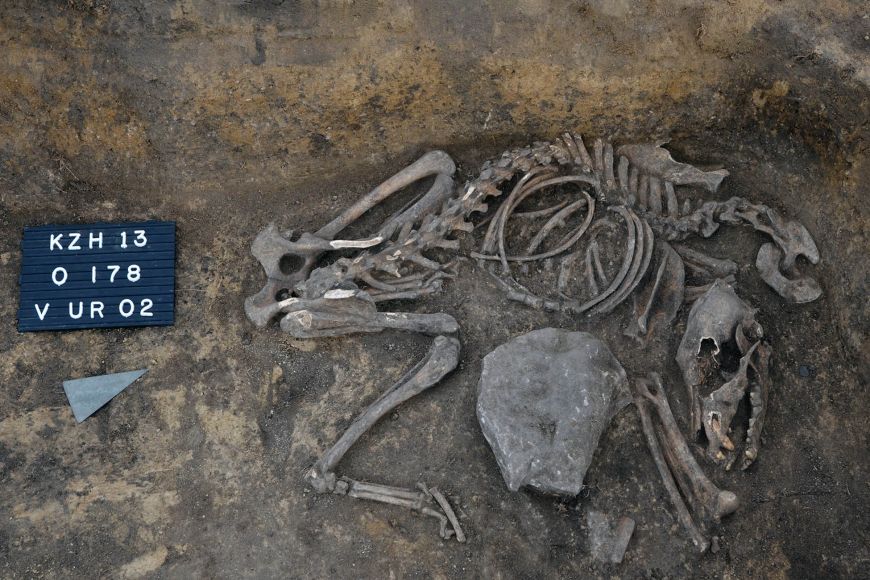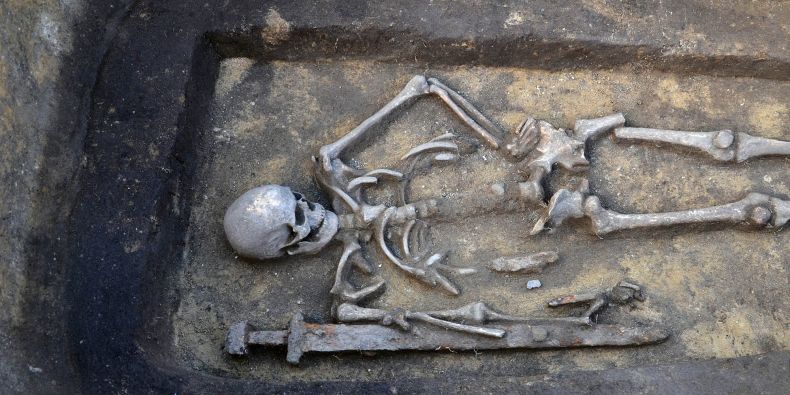At the end of August near Kostice archaeologists from the Faculty of Arts experienced three days of great tension. It took this long before the tomb of a sword-bearing Great Moravian warrior was revealed in its entirety.
“Thanks to our metal detectors we knew about the presence of a long metal object, but we couldn't be sure what it was until we had cleared the tomb's infill and uncovered part of the skeleton. We were thrilled to discover the hilt of the sword," says head of the expedition Jiří Macháček of this latest find from Pohansko in the Břeclav region.
In the ninth century Pohansko was one of the largest centres in Great Moravia. Scientists from the Department of Archaeology and Museology have been studying this densely populated agglomeration and its surroundings for fifty-five years.
For archaeologists such a discovery is a red-letter day. Machaček explains that only three Great Moravian swords have been found in the past fifteen years. “It is rare to find a sword – in those days it was a weapon for the elite." The newly-discovered tomb near Pohansko also contained other objects: a fire striker with a flintstone, a knife with a decorated haft and bronzework, and a small receptacle for alms.
The tomb of the Great Moravian warrior has presented archaeologists with a number of unexpected mysteries. The source of the first is the discovery of two bronze rings at the waist of the buried man. These appear to be earrings, although experts are at a loss to explain why they were there. “Earrings are part of a woman's outfit. It seems the warrior had them in a pouch at his waist, but so far we don't know, indeed, we have no idea, why he had them," says Macháček, before adding with a smile: "Some students came up with the idea that they were a gift from his beloved."
Unique, too, is the place where archaeologists found the entombed warrior. It is about one and a half kilometres from the Great Moravian fortified settlement at Pohansko, at whose necropolis four tombs containing swords were discovered in the Sixties.
From time to time such tombs are found at provincial burial sites, where village leaders and representatives of the sovereign were interred. “But we have discovered a new phenomenon," Macháček continues. “Our warrior was buried alone, in close proximity to his home." This so-called 'earth lodge', a square dwelling with a stone oven that was embedded in the earth, is the source of another mystery. Buried at one of its corners was a dog, which presumably belonged to the warrior.

There are yet more details that set this tomb apart from similar discoveries. “Four years ago we found the tomb of another warrior two hundred metres from this site," says Macháček. “This one had not a sword but spurs – he was a rider. He also had a battle-axe. There was an earth lodge with a stone oven not far from this tomb, too, and in the earth lodge a dog was buried."
As they document the find the archaeologists will be looking for connections in the archaeology of Europe as a whole. Macháček explains: “We have two warriors buried separately by their homes and with their dogs. We are interested in who these people were. One hypothesis is that they were guardians of the fort at Pohansko, buried where they performed their duty so that symbolically they would continue to stand guard."
The contents of the newly-discovered warrior's tomb have now been entrusted to specialists. Once conservation and documentation have been completed it seems likely that the warrior will be presented to the public.
